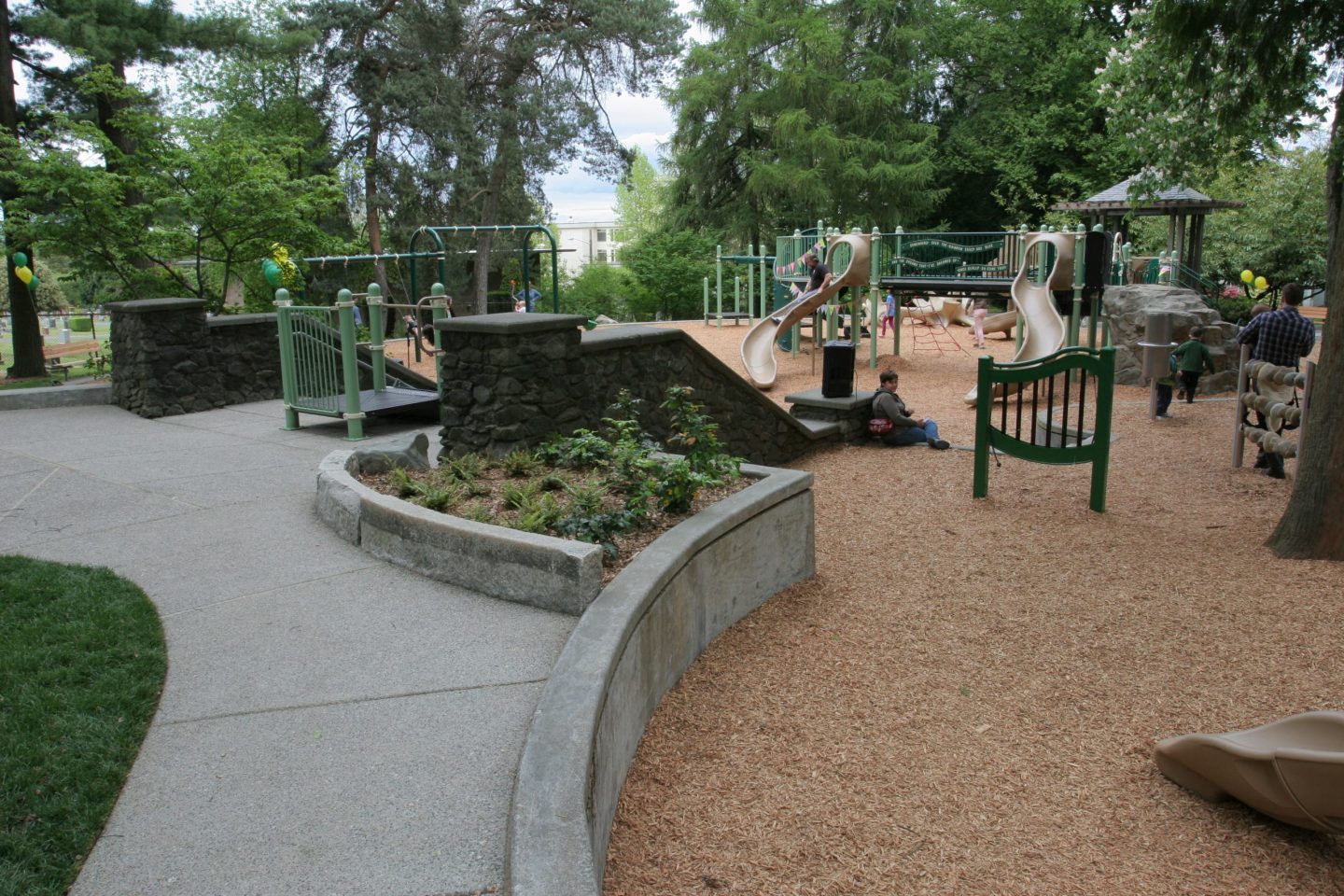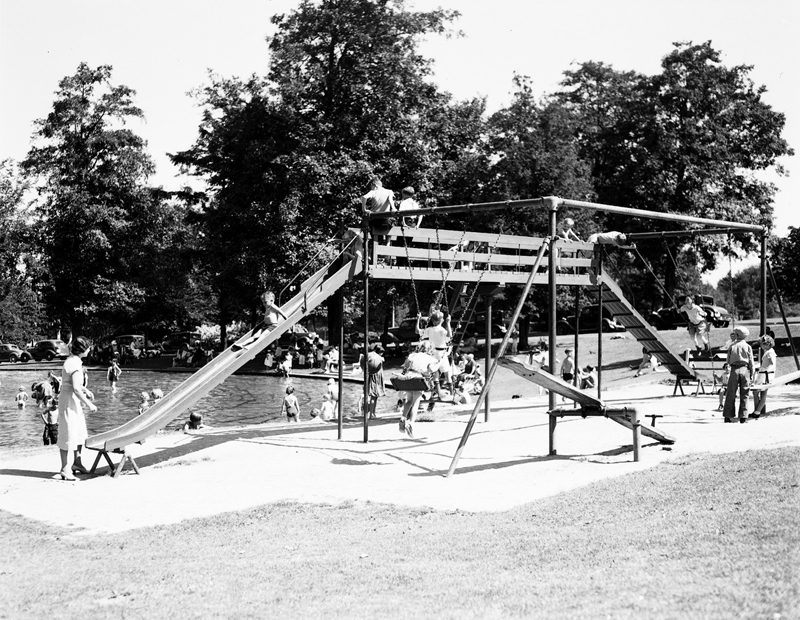-
The wading pool is generally open on sunny days when the temperature is forecast to be 70 degrees or above. Check Seattle Parks and Recreation’s website for more details.
-
Playground
Volunteer Park
Neighborhood parks developed in Seattle in the early 20th century often featured playgrounds. Civic leaders and landscape architects had come to realize the importance of play spaces for children, and Olmsted usually incorporated two distinct areas for play. Little Folks Lawns provided a somewhat protected space for small children. Areas with larger playground equipment like swings and slides offered space for older children to climb and run and play.
In Volunteer Park, Olmsted initially separated these two areas by a considerable distance. He put the Little Folks lawn, shelter house, and wading pool here, in the northeast corner of the park. The playground for older children was planned for the southwest corner, near Prospect Street. The plan shows swings, ropes and bars (which were likely a climbing structure) and a Giant Stride, which was a pole with ropes hanging down from it. Children could grab a rope and run in a circle until their feet would leave the ground.
The space for the playground was prepared and ready for construction, but neighbors feared that the noise from the playground would be disruptive for adjacent homes along Federal Avenue, so Olmsted relocated the playground to the northeast corner, just east of the wading pool, where it is located today.
In 1962, the Playform sculpture by Seattle sculptor Charles Smith was placed in the playground area. It was installed in honor of Dorothy Block, who was serving on the Board of Park Commissioners when she died. A newspaper article published at the time of its installation noted that the sculpture would provide a place for climbing as well as help children develop an appreciation for abstract design.
Walk along the path alongside the wading pool and then up the hill toward the Shelter House. The path arcs around Olmsted’s Little Folks Lawn.




